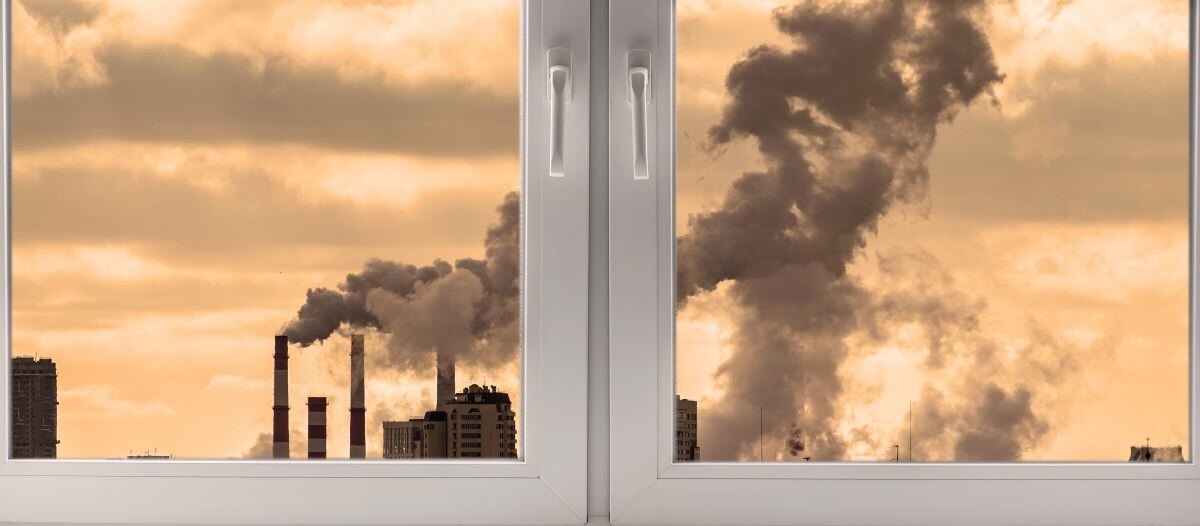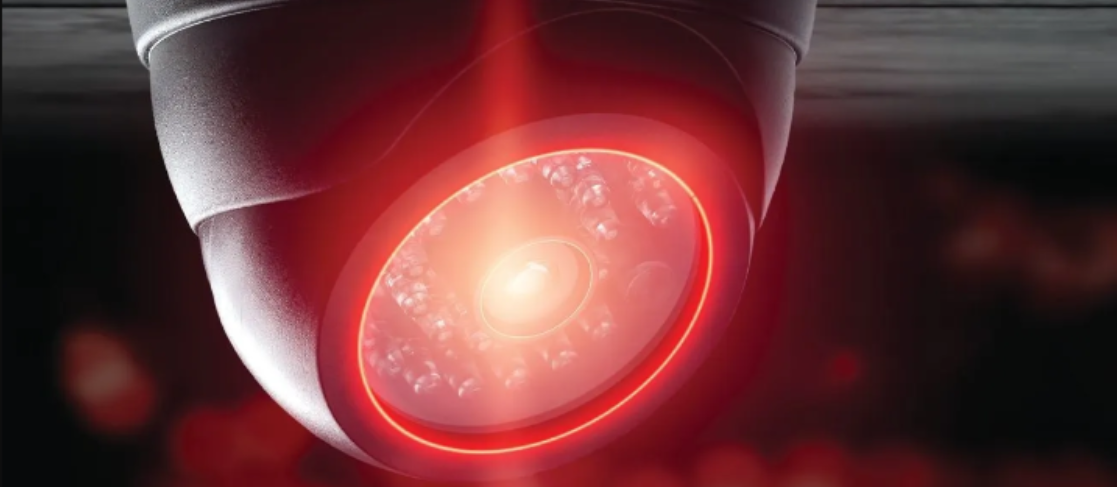Keeping the Outside Out
Safeguarding IAQ amidst outdoor air challenges

In an era marked by escalating climate change and its far-reaching consequences, the need to prioritize indoor air quality (IAQ) has become even more paramount. The recent surge in outdoor air pollution events, such as wildfire smoke and urban smog, has prompted health officials to advise staying indoors and underscores the importance of maintaining a safe and healthy indoor environment. Humans spend 90 percent of their lives indoors; however, they do not always think about the air they breathe inside.
Wildfires can have a significant impact on IAQ, even for areas that are not directly affected by the fires themselves. The smoke, pollutants and particulate matter released during wildfires can travel long distances and infiltrate indoor environments, leading to various health and air quality concerns. Infiltration of wildfire smoke can even lead to a rapid decline in IAQ. Wildfire smoke contains a mixture of pollutants, including fine particulate matter (PM2.5), carbon monoxide (CO), volatile organic compounds (VOCs) and other toxic gasses. These pollutants can easily enter indoor spaces through open windows, doors and outdated ventilation systems.
Exposure to wildfire smoke and its pollutants can also have negative effects on building occupants, as poor indoor air quality can lead to health problems such as fatigue and headaches; cause or worsen asthma and other respiratory illnesses; and even affect an occupant's ability to be productive. According to Honeywell’s annual Healthy Building Survey, 68 percent of respondents said IAQ at their workplace contributes "a lot" to their productivity and according to the EPA, exposure to fine particle pollution can cause respiratory and cardiovascular health issues. Specifically, PM2.5 particles are particularly concerning, as they are small enough to penetrate deep into the respiratory system and can cause inflammation and other health problems. Even healthy individuals can experience symptoms like coughing, shortness of breath, irritation of the eyes and throat and exacerbation of existing health problems. Prolonged exposure to poor IAQ due to wildfire smoke can have both short-term and long-term health effects. In the short term, it can exacerbate existing health conditions and lead to discomfort. Over the long term, chronic exposure to indoor pollutants can contribute to respiratory diseases and other health issues.
When it comes to wildfire smoke, the main concern lies not in the restriction of outdoor air into buildings, but rather in the maintenance of healthy indoor air when the option to bring in fresh air is not available. As pollution events become more prevalent and building occupants become increasingly aware of the impact air quality has on their well-being, building owners find themselves at the forefront of maintaining occupant well-being and operational efficiency.
With the increasing occurrence of wildfires and their related effects, preparing for potential IAQ impact is essential. When outdoor air is unfavorable, building owners should exercise additional precautions to safeguard occupants. They must rely on advanced and automated sensing, filtration, air purification and air circulation systems to promote safer air quality. But as the talk of IAQ improvements takes center stage, facility managers are left with an important question: What are the most effective strategies to put in place?
#1: Continually assess and communicate IAQ
The foundation of maintaining an ideal indoor environment lies in comprehensive IAQ assessment and communication. The key is to adapt when external air becomes a risk rather than a solution. When outdoor air quality deteriorates, a proactive approach entails avoiding the influx of polluted air into buildings. In such scenarios, the integration of advanced indoor air quality sensors that continually monitor air quality, detect contaminants and clean the air automatically becomes pivotal.
These sensors, designed to monitor carbon dioxide (CO2), VOCs, temperature, relative humidity and PM2.5, enable data-driven decision-making. Continuous analysis and tracking of this data facilitates the identification of trends and enables swift corrective action when indoor air quality changes. An intelligent integration of these sensors with HVAC systems helps empower FMs to automatically maintain a cleaner indoor atmosphere.
Additionally, promoting transparency by communicating IAQ levels fosters a sense of trust and well-being among occupants. According to the 2023 Honeywell Healthy Buildings Survey, 82 percent of office workers want to be informed about their building’s indoor air quality often or sometimes. Transparent communication not only builds confidence but also empowers individuals to take precautionary measures, enhancing the overall safety and comfort of the indoor environment.
#2: Rethink ventilation
Ventilation is a crucial factor in maintaining healthy IAQ levels and thermal comfort as it freshens up the air inside buildings and dilutes the concentration of harmful particles. While the conventional method of opening windows to facilitate ventilation is effective, it is not always a viable option, particularly in areas with compromised outdoor air quality. In these instances, FMs must explore alternative ventilation strategies so that IAQ remains optimal.
Mechanical ventilation devices, such as outdoor-venting fans and portable air cleaners, emerge as invaluable tools. They facilitate the circulation of air while effectively reducing pollutants. Integrating these devices with the building's HVAC system offers a versatile solution that adapts to fluctuating indoor air quality requirements. This holistic approach enhances the safety and comfort of indoor spaces, even when outdoor air presents a potential threat. FMs can help adjust ventilation within buildings with a couple of simple practices:
- Avoid shutting down HVAC systems. Purge building air by extending the operating times of HVAC systems to run before the earliest staff arrive for the day and after the last occupants have left for the night.
- When possible, increase the number of air exchanges per hour to provide fresh air to closed spaces. This can be achieved through natural or mechanical ventilation.
#3: Improve filtration & purification
One of the most effective ways to improve IAQ is to clean existing indoor air, especially when outdoor air ventilation is limited. To combat the challenges posed by limited outdoor air ventilation, building owners and FMs must embrace advanced filtration and purification technologies as these methods clean and capture contaminants that can linger in the air. The use of high efficiency particulate air (HEPA) filters, which demonstrate exceptional efficiency in capturing particles as small as 0.01 micron, are recommended. Additionally, research shows mobile HEPA air purifiers can help reduce airborne contaminants by capturing 97 percent of particles as small as 0.3 microns and even smaller.
Pressurization technologies add another layer of protection by controlling the movement of air contaminants within a building, leading to improved indoor air quality. Control of air pressure, both positive and negative, inside a building is key to providing comfort and preventing outdoor contaminants from entering a space. This nuanced approach creates a comfortable and healthy indoor environment year-round, while also catering to specific seasonal demands. For example, a slight positive pressure will prevent hot outside air from penetrating into the building during the summer, and negative pressure during the winter can maintain humidity by allowing outside air into the building.
Intelligent and advanced technology is essential to prioritize IAQ amid air quality events like wildfires and urban smog. Ventilation is, and will continue to be, critical. FMs must realize that opening a window or a door is not a long-term solution to improved airflow and is not realistic in extreme cold or hot temperatures or where the outdoor air quality is poor. By using software-based analytics and ventilation strategies, building and FMs can enhance IAQ, maintain energy consumption and create a better occupant experience. IAQ sensors and dashboards show real-time data that makes people feel more confident about the spaces they use. By taking proactive measures, building owners can help minimize the adverse effects of wildfire smoke and pollution on indoor environments and prioritize the health of occupants.
Prioritizing IAQ has never been more top of mind for occupants. The changing climate landscape necessitates a reevaluation of traditional practices and the use of proactive and innovative technologies. As outdoor air quality faces unprecedented challenges, building owners and FMs are poised to become champions of occupant health and operational resilience. By continually assessing and communicating IAQ, reimagining ventilation methodologies and enhancing filtration and purification mechanisms, building owners can lead the charge toward a safer and healthier indoor environment.

Manish Sharma is vice president and chief product officer for Connected Buildings at Honeywell. He is focused on driving meaningful outcomes for customers, including sustainability, across their buildings. Sharma previously served as vice president and general manager of Sustainable Buildings for Honeywell Building Technologies (HBT), a business focused on making buildings and facilities more energy efficient with the aim of enabling organizations to meet their net zero goals. He joined Honeywell in 1999 and has held numerous leadership roles in engineering and product development. He started his career as a design and commissioning engineer of Integrated Building Management Systems at Johnson Controls India. Sharma graduated with a Bachelor of Engineering from the Government Engineering College at Rani Durgavati University. He also completed the general management program from The Indian Institute of Management Bangalore.
References
epa.gov/report-environment/indoor-air-quality
epa.gov/indoor-air-quality-iaq/wildfires-and-indoor-air-quality-iaq
epa.gov/wildfire-smoke-course/why-wildfire-smoke-health-concern
epa.gov/indoor-air-quality-iaq/care-your-air-guide-indoor-air-quality
honeywell.com/us/en/press/2023/02/honeywell-survey-reveals-increased-expectations-for-healthier-workplaces
epa.gov/air-research/air-pollution-and-cardiovascular-disease-basics
epa.gov/wildfire-smoke-course/health-effects-attributed-wildfire-smoke
epa.gov/indoor-air-quality-iaq/what-hepa-filter
honeywell.com/us/en/press/2021/05/honeywell-hotel-study-suggests-air-purifiers-help-reduce-exposure-to-airborne-contaminants
Read more on Operations & Maintenance , Occupancy & Human Factors and Emerging Topics
Explore All FMJ Topics









